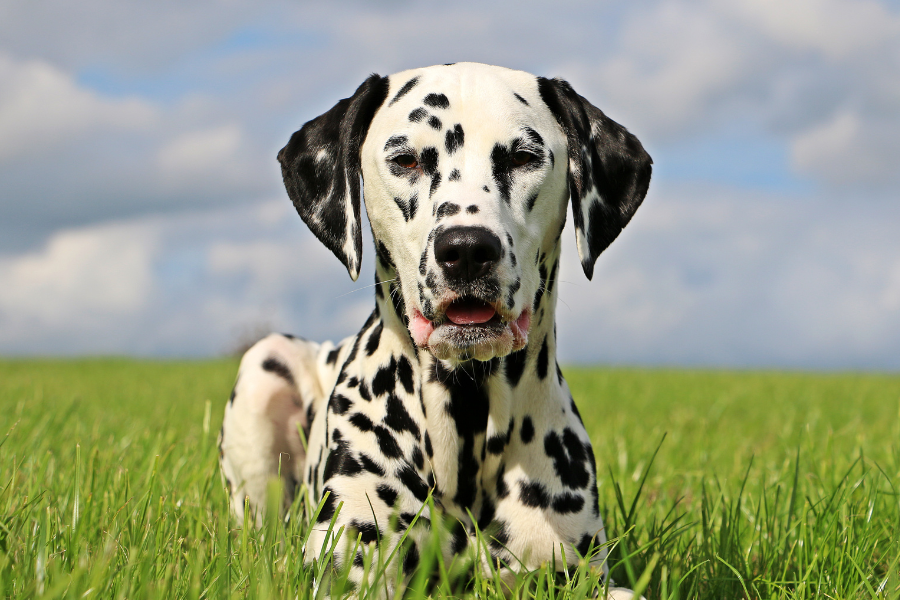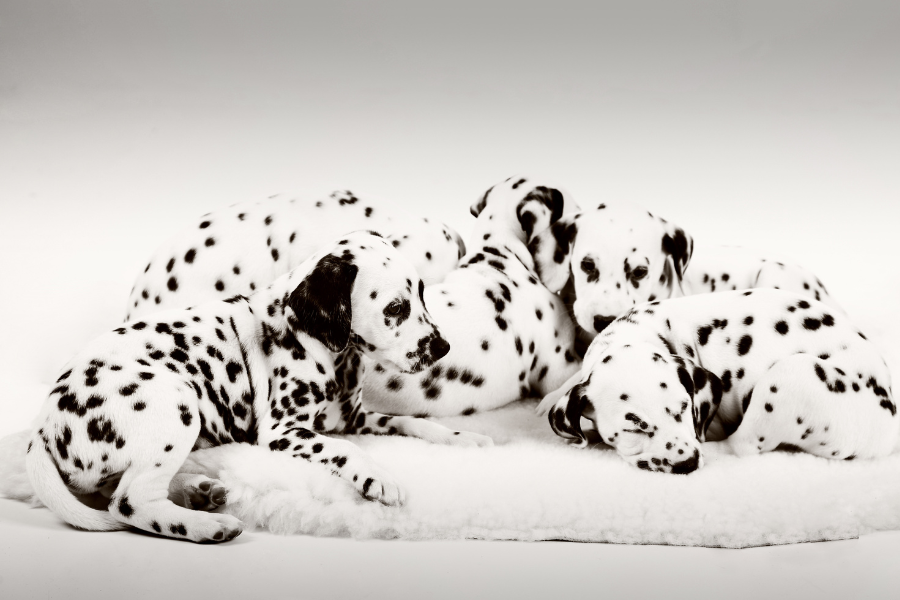When you think of a Dalmatian, you inevitably picture a white dog with a unique array of black spots – a pattern so iconic that it has become the breed’s signature trait. But have you ever wondered why Dalmatians are spotted? This post will explore the fascinating reasons behind these dots, the genetics at play, and what it means for the health of these charismatic canines.
A Storied History: The Dalmatian Legacy
Dalmatians have a rich history; they were originally bred in the historical region of Dalmatia (present-day Croatia), where they served as dogs of war, hunters, and even shepherd dogs. Their distinct spots have always set them apart, and as carriage dogs, they ran alongside horse-drawn vehicles, a duty that harks back to their strong stamina and distinctive, easy-to-spot coat.
The Science Behind the Spots
So, why the spots? To answer that, we delve into the genetics. Dalmatians' spots are the result of different gene expressions of the T and S genes, which is responsible for the distribution of pigmented cells. The spots develop three to four weeks after birth; before that, puppies are born with plain white coats.
Veterinary geneticists confirm that this genetic coding also determines the size and location of the spots. The pigmentation begins to manifest as puppies grow, leading to the unique pattern we adore. It's a genetic roll of the dice, and even though all Dalmatians have spots, no two Dalmatians have the same pattern!
Spotless Pups: The Rarity of Solid-Colored Dalmatians
Rare as they might be, Dalmatians without spots do exist, known as "solid"-coated Dalmatians. However, this is not a recognized standard for the breed. These dogs might have very faint spots or none that are visible. This rarity can be attributed to gene variation, making each Dalmatian's coat an interesting case study in genetics.
The Genetics of Dalmatian Spots Unveiled
The genetics behind Dalmatian spots is quite intricate. Each spot is actually a cluster of pigmented hair.
SHOP FRAMED DALMATIAN PHOTOS
There are several gene expressions at play which dictate the coat colorations, one that comes into play is the S gene, which is associated with the presence of a white coat in dogs. The S gene affects the extent of white spotting, and it is what predominantly gives Dalmatian their characteristic white base coat. This genetic factor, combined with the switch controlled by the T gene, dictates not only the emergence of spots but also the distribution and dominance of white areas on the coat. Complex interactions between the T gene and the S gene can produce variations that range from a nearly pure white dog with very few spots to one with dense, overlapping spots—showcasing the fascinating interplay of genetics in determining a Dalmatian's appearance.
Recent studies, such as the one published in PLOS ONE, have shed light on the role of the R-locus, which is associated with a tandem duplication affecting KIT gene expression. This locus, intriguingly, is also linked to the distinctive coat patterning seen in Dalmatians. The research suggests that the roaned coat, commonly associated with breeds such as the English Cocker Spaniel, is due to a tandem duplication in a non-coding sequence, which also contributes to Dalmatian spotting. The complexity of these genetic factors exemplifies the intricate workings of genetic determination and expression, which go far beyond the simple influence of the T and S gene, and add layers of diversity to the Dalmatian breed.
The Intersection of Spots and Health
While Dalmatians’ spots are charming, they can come with a few health implications. Researchers have found a link between the genes responsible for spots and certain hereditary health conditions, notably deafness and urinary stones. The genetics responsible for the absence (or presence) of melanin in parts of the ear's internal structure can predispose these spotted friends to hearing issues.
To maintain the wellbeing of this breed, reputable breeders often conduct BAER (Brainstem Auditory Evoked Response) tests on puppies to check for deafness early on. Particular attention is also given to their diet and hydration to manage the risk of urinary stones.
In their publication titled "Patched1 Haploinsufficiency Increases Adult Bone Mass and Modulates Gli3 Repressor Activity" (PubMed Central), scientists examined a gene that significantly affects skeletal development, which could pave the way for more insights into Dalmatian health related to their distinctive coat.
Final Thoughts
The Dalmatian's spotted coat is more than just an aesthetic delight; it's a window into the complex world of canine genetics. While their historical roles have evolved, the charm of the Dalmatian remains timeless. By understanding the genetic underpinnings of their spotted coats, we gain insight into their overall health and uniqueness.
As we continue to adore these spotted companions, it’s essential to cherish and care for them just as much as we marvel at the beauty of their unique coats. With dedicated research and responsible breeding practices, we can ensure that Dalmatians thrive, enjoying long, vibrant lives dotted with happiness.
References
- Kaelin, C. B., Xu, X., Hong, L. Z., David, V. A., McGowan, K. A., Schmidt-Küntzel, A., ... & Barsh, G. S. (2012). Specifying and sustaining pigmentation patterns in domestic and wild cats. Science, 337(6101), 1536-1541. doi:10.1126/science.1220893
- Bauer, A., Kehl, A., Jagannathan, V., Leeb, T. (2021). R-locus for roaned coat is associated with a tandem duplication involving the MITF gene as well as the development of Dalmatian spotting. PLoS ONE, 16(3), e0248233. https://doi.org/10.1371/journal.pone.0248233
(Note: This content is tailored for informational purposes and should not replace professional veterinary advice. Always consult with a vet for specific health concerns regarding your pet.)




